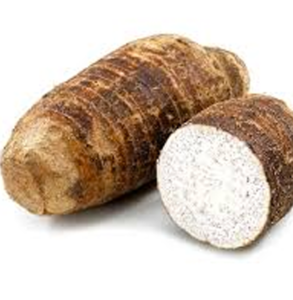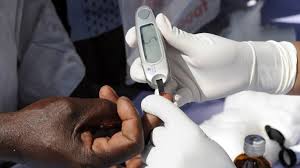For individuals with diabetes, proper nutrition is essential for managing blood sugar levels, reducing the risk of complications, and promoting overall health. Carbohydrates have the most significant impact on blood sugar levels. It is therefore crucial to monitor carbohydrate intake and choose healthy sources of carbohydrates such as whole grains, fruits, vegetables, and legumes. High-fiber foods can also help control blood sugar levels by slowing down the absorption of carbohydrates. Adequate protein intake can also be helpful in managing blood sugar levels.
Healthy fats, such as omega-3 fatty acids, can help reduce inflammation and improve cholesterol levels. Sources of healthy fats include fatty fish, nuts, seeds, and avocado. People with diabetes are at an increased risk of high blood pressure, so limiting sodium intake is important. Avoiding processed foods and choosing fresh foods and cooking at home can help reduce sodium intake.
In addition to monitoring food intake, people with diabetes must also monitor their portion sizes, stay hydrated, and limit alcohol intake. Working with a registered dietitian or healthcare provider can help develop a personalized nutrition plan to manage diabetes and maintain overall health. With proper nutrition and medical care, individuals with diabetes can lead healthy and fulfilling lives.
What is Cocoyam?
Cocoyam also known as Taro root, is a nutritious root vegetable that is eaten across the African continent. Growing up to 6 feet tall, cocoyam (taro root) is a large perennial plant with large heart-shaped leaves, and turnip-sized corms. Cocoyam contains a wealth of organic compounds, minerals, and vitamins that can benefit our overall health in a number of ways. One cup (132 grams) of cooked cocoyam has 187 calories — mostly from carbs — and fewer than one gram each of protein and fat. It has a very significant amount of dietary fiber and carbohydrates, as well as high levels of vitamin A, C, E, vitamin B6, and folate, according to the USDA National Nutrient Database. There is magnesium, iron, zinc, phosphorous, potassium, manganese, and copper in it. The plant also provides some protein in your diet, but the amount is almost negligible.
Diabetes mellitus, commonly known as diabetes, is a metabolic disease that causes high blood sugar. The hormone insulin moves sugar from the blood into your cells to be stored or used for energy. With diabetes, your body either doesn’t make enough insulin or can’t effectively use the insulin it does make. Untreated high blood sugar from diabetes can damage your nerves, eyes, kidneys, and other organs.
Is Cocoyam Safe For Patients with Diabetes?
Yes, cocoyam contains two types of carbohydrates that are beneficial for blood sugar management: fiber and resistant starch. Fiber is a carbohydrate that humans can’t digest. Since it’s not absorbed, it has no impact on blood sugar levels. It also helps slow down the digestion and absorption of other carbs, preventing large blood sugar spikes after meals.
When it comes to the safety of cocoyam in diabetics, the signal from scientific research is mixed and inconclusive. According to a study published in the Journal of Dietitians Association of Nigeria vol. 8, 2017, most cocoyam varieties show low to moderate glycemic index and glycemic load, the study recommended that cocoyam could be used in prevention and management of diabetes and should be recommended to over-weight, obese and diabetic individuals.
However, another study on the same subject matter published in the Sahel Medical Journal reported that after consumption of cocoyam, blood glucose concentration peaked at two and one hours in type 2 diabetic and healthy subjects. The glycaemic indexes ( GI ) in both groups were 81 and 80 while the glycaemic load was 40 and 40.5 respectively. Boiled cocoyam, therefore, is of high glycaemic index and should be combined with low glycaemic index food for it to be suitable for diabetic subjects.
Foods with a high GI can cause a rapid increase in blood sugar levels, which is not desirable for people with diabetes. Cocoyam has a moderate to high GI, which means it can cause a significant increase in blood sugar levels when consumed in large amounts. Therefore, it is not recommended as a regular staple food for diabetics. However, consuming cocoyam in moderate amounts and in combination with other low-GI foods can be part of a healthy, balanced diet for people with diabetes.
It is important for diabetics to work with a registered dietitian or healthcare provider to develop an individualized meal plan that takes into account their specific needs and preferences.
SEE: Is Cocoyam Good For Weight Loss?
Other foods that can help in managing diabetes
Figuring out the best foods to eat when you have diabetes can be tough. That’s because your main goal should be controlling your blood sugar levels. However, it’s also important to eat foods that help prevent diabetes complications like heart disease. Your diet can have a major role in preventing and managing diabetes. The following can help;
Raw, Cooked, or Roasted Vegetables. These add color, flavor, and texture to a meal. Choose tasty, low-carb veggies, like mushrooms, onions, eggplant, tomatoes, cabbage, and cucumber.
Flavorful, Low-calorie Drinks. Plain water is always good, but water infused with fruits and vegetables is more interesting. Cut up a lemon or cucumber and put it in your water, or make ice cubes with some flavoring in them. If you’re not a hot tea drinker, try cold tea with lemon or a cinnamon stick.
Whole-grain, Higher-fiber Foods. Fill up on these to keep from overeating or choosing the wrong foods. Try legumes like dried beans, peas, and lentils. You can even enjoy a black bean and corn salsa with your raw vegetables.
A Little good Fat. Good fat choices include olive oil, avocado, and fatty fishes — think salmon served on a bed of lettuce, for example. The fat from the fish serves as a dressing for the salad.
Protein. Can be broken down by the body into glucose and used for energy (a process known as gluconeogenesis). Protein can be broken down into glucose by the body and the effects are more likely to be noticed if you are having meals with less carbohydrate. READ: Is Egusi Good For Diabetes?






